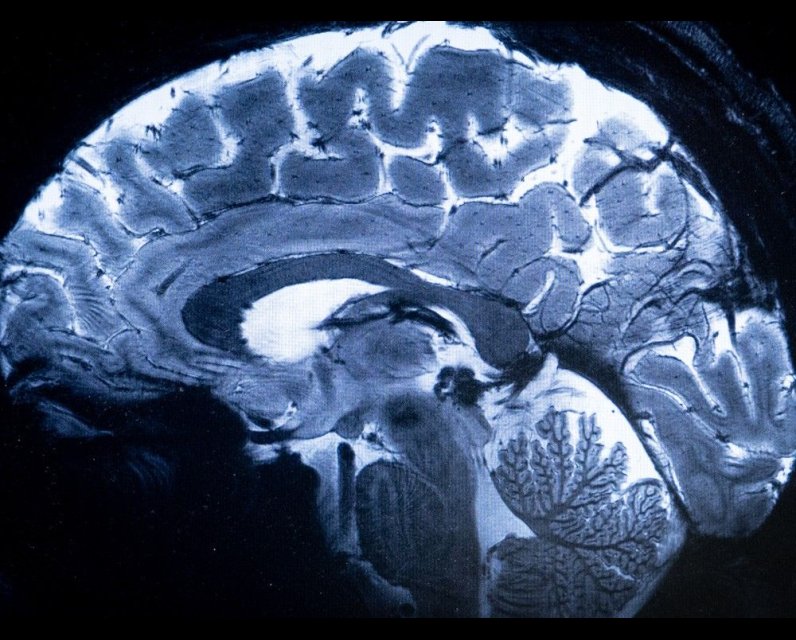Source Feed: National Post
Author: Chris Lambie
Publication Date: May 7, 2025 - 11:00
That mystery brain disease plaguing people in New Brunswick? A new study finds it's not real
May 7, 2025

A new study is debunking “an alleged ‘mystery’ neurological illness” that emerged in New Brunswick six years ago.
The research,
published Wednesday in JAMA Neurology
, took another careful look at 25 cases of people previously diagnosed with what’s dubbed a neurological syndrome of unknown cause (NSUC), 11 of whom have since died.
“There was no evidence supporting a diagnosis of NSUC in this cohort,” the study concludes.
Instead, well-known conditions were identified in all 25 cases, including common neurodegenerative diseases, functional neurological disorder, traumatic brain injury and metastatic cancer.
“Based on the 11 autopsy cases, a new disease was extremely unlikely, with a probability less than .001,” said the study.
New Brunswick neurologist Dr. Alier Marrero has said he’s seen hundreds of patients in recent years
—
including some from neighbouring Nova Scotia
—
who are experiencing inexplicable symptoms of neurological decline. Those include anxieties and difficulty sleeping, as well as more acute symptoms including limb pain and trouble balancing, teeth chattering, violent muscle spasms, vision problems and hallucinations. Many of them were under the age of 45.
Last November, New Brunswick Premier Susan Holt said she wanted the Public Health Agency of Canada to investigate.
An oversight committee appointed by Progressive Conservative Blaine Higgs’ former government rejected the idea that the cases are linked. It indicated that most of the patients in the cluster were misdiagnosed.
“Despite these findings, the number of cases reported in the media has grown to more than 500 patients with more than 50 deaths, although (Public Health New Brunswick) has received only 222 verified submissions,” said the new study. “Speculations regarding the underlying cause have included an unknown prion disease, toxins from cyanobacteria, glyphosate, glufosinate, and heavy metals. However, despite extensive media attention, no clinical or pathological case descriptions have been published in the medical literature to our knowledge.”
The sample of 25 cases was drawn from a cohort of 222 people who received an initial NSUC diagnosis.
“Eligible patients were offered a second opinion; four families of deceased patients provided consent for reporting autopsies and waivers of consent were obtained for seven,” said the study.
The research was conducted at Horizon Health Network in New Brunswick and University Health Network in Ontario.
“Complex neurological disorders benefit from a second, independent and/or subspecialist evaluation and require multidisciplinary support throughout the diagnostic journey,” said the study that collected data between November 2023 and this past March.
“Clinical and neuropathological evaluations demonstrated that all 25 cases were attributable to well characterized neurological disorders,” it said. “The final primary diagnoses, and in some cases secondary diagnoses, included Alzheimer disease, Parkinson disease, progressive supranuclear palsy, other neurodegenerative conditions, functional neurological disorder, traumatic brain injury or persisting post concussion symptoms, and others.”
The independent assessment of 25 patients “provides no support for an undiagnosed mystery disease in New Brunswick,” said the study.
“The gold standard, neuropathological assessments with second, blinded independent evaluations, revealed well-defined diagnoses for 11 deceased patients.”
When all 25 cases were included in the mix, “100 per cent of patients in this sample did not have a new disease and with 95 per cent confidence, the probability of no new disease is between 87 per cent and 100 per cent,” said the study.
“The lower bound of 87 per cent reflects a conservative estimate based on the data and statistical methods accounting for uncertainty in the sample, including the possibility of diagnostic error or unmeasured variability. However, practical knowledge and clinical reasoning suggest that the actual probability of no new disease is much closer to the upper bound of 100 per cent.”
The new study said “it is crucial to highlight the factors that fuel persistent public concern of a mystery disease despite the provincial investigation rejecting this possibility. Public trust in health institutions has decreased since the COVID-19 pandemic, while trust in individual healthcare professionals remains high, which can make vulnerable people susceptible to claims that the institutional oversight processes are flawed, especially if originating from trusted physicians.”
The new research comes with a caution.
Misinformation regarding the New Brunswick “cluster has proliferated in both traditional and social media, from not only the predictable and easily identifiable groups coopting the crisis to suit their agenda, such as antivaccine advocates, but also those who are unknowingly amplifying an incorrect diagnosis from their physician,” said the study.
“In this way, misdiagnosis and misinformation become inextricably entwined and amplify patient harm exponentially: to the best of our knowledge, only 14 patients sought independent reevaluation by another neurologist when offered, and 52 refused a second opinion, choosing instead to remain with the one neurologist who originally made and continues to promote the diagnosis of a mystery disease. Not only do our data indicate that affected patients likely have other diagnosable neurological conditions that could benefit from multidisciplinary treatment and other resources, but the low uptake also impedes the rigorous scientific evaluations necessary to counter the claims raised in the first place.”
For his part, Marrero, the New Brunswick neurologist who made the original diagnoses, said in an email Wednesday that he’s “appalled that a parallel investigation with a small number of patients, has apparently been conducted for a long time, without our knowledge or our patients and families’ knowledge.”
Marrero said he is “in profound disagreement with the study conclusions and (has) many questions regarding the methods and the content, including cases never evaluated by us or that might have not been part of this cluster.”
Marrero is “also surprised that a publication about such a potential impact, happening in parallel to an ongoing public health investigation, and that include data until March 2025, was published so speedily in a matter of weeks. I am sure that our patients, families and communities share the same very serious concerns.”
The Moncton neurologist said he has “evaluated more than 500 patients in this cluster, and provided a significant amount of unequivocal, sometimes critical environmental exposure evidence, as well as rare autoimmune markers in many of them. As such, I trust that the current process of independent multidisciplinary scientific investigation, and extensive files analysis that is underway by our public health authorities, could provide appropriate answers to our communities.”
Marrero is “hopeful that this process would include not only comprehensive additional (patient) testing, but also testing for water, food, soil and air samples in the affected areas, as well as additional patient support and effective prevention and treatments measures.”
Our website is the place for the latest breaking news, exclusive scoops, longreads and provocative commentary. Please bookmark nationalpost.com and sign up for our daily newsletter, Posted, here.
Max Pacioretty started the playoffs in the press box.
May 8, 2025 - 12:58 | Globalnews Digital | Global News - Ottawa
White smoke billowed from the Sistine Chapel chimney at 6:07 p.m. Roman time, alerting the crowd of faithful Catholics gathered in St. Peter’s Square that the College of Cardinals have elected a new pope.
The sign comes on the second day of voting and the fourth vote. It means that the Cardinals reached the two-third majority have decided to elevate one of their ranks to be the head of the church.
The gathered crowd cheered in elation as the smoke rose on a beautiful Thursday evening in Rome.
The new pope will soon emerge on the papal balcony, announcing himself and his papal name...
May 8, 2025 - 12:54 | Stewart Lewis | National Post
Quebec is reporting a near-record rate of immigration in 2024, with the province’s population increasing to more than 9.1 million at the start of this year.A new report from Quebec’s statistics institute says nearly 160,000 immigrants arrived in Quebec last year, the second-highest number recorded after 2023.The majority of the newcomers were non-permanent residents, including temporary foreign workers, international students and asylum seekers.
May 8, 2025 - 12:34 | | The Globe and Mail



Comments
Be the first to comment